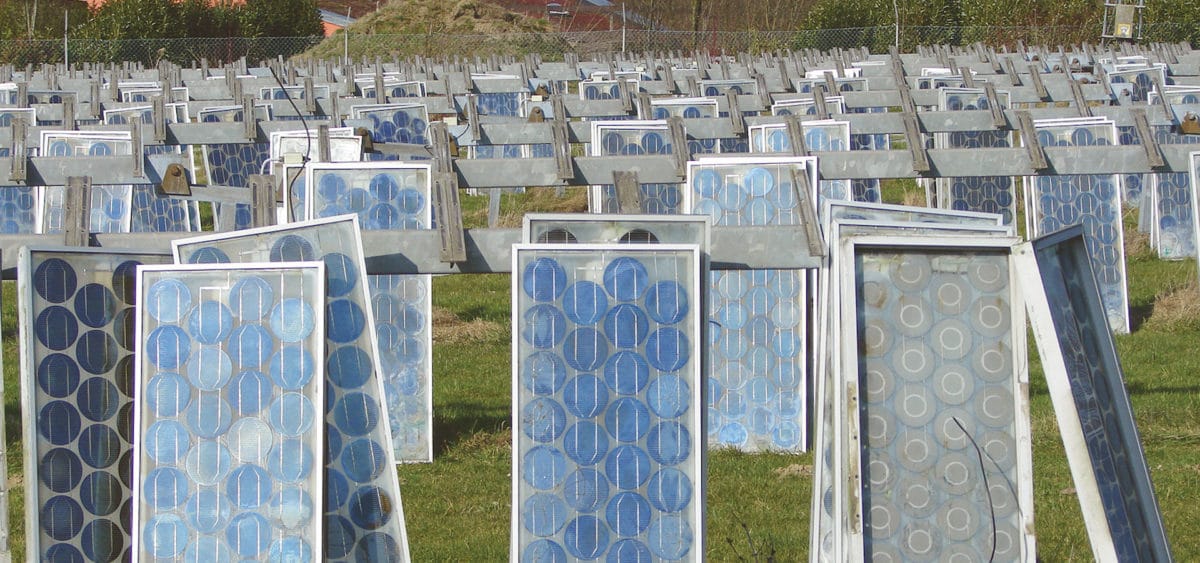Australia continues to demonstrate its appetite for solar, with data provided by the Clean Energy Regulator (CER) showing more than 2.66 million rooftop solar power systems had been installed across the nation by the end of 2020, with a collective capacity of more than 10 GW. However, that rate of uptake has given rise to concerns about recycling and minimizing the impacts of end-of-life solar PV systems in Australia.
While solar modules are designed to last, with an average life span of 25 years, eventually they are going to become inefficient and need to be replaced. Increasingly, industry experts are starting to ask what is going to be done with the solar modules when they are due to be decommissioned.
Professor Peter Majewski from the University of South Australia (UniSA) said it is estimated more than 100,000 tons of solar modules will enter Australia’s waste stream by 2035. The New South Wales Environment Protection Authority (EPA) has forecast that by 2025, New South Wales alone will generate between 3,000 and 10,000 tons of waste solar panels and battery storage systems each year. That will increase to between 40,000 and 71,000 tons per annum by 2035.
Majewski, who is leading research at UniSA’s Future Industries Institute (FII) to help establish a lifetime stewardship scheme for Australia’s PV industry, said it is imperative end-of-life strategies are put in place long before solar waste peaks.
“We have time to plan for this and ensure the processes are in place, but we have to start acting now, as the right practices may take some time to implement,” he said. “There are good stewardship programs in place for products such as paint and tires in Australia, and we would like to see a similar system in place for solar, where the disposal process is pre-planned as an integral part of the product lifecycle.”
The federal government has acknowledged the concern, offering a AUD 2 million ($1.5 million) grant as part of the National Product Stewardship Investment Fund to develop and implement an industry-led product stewardship scheme for PV systems. It is expected that the scheme will encourage shared responsibility throughout the supply chain to manage the impacts of PV modules through their life cycle and support the development of an efficient and innovative domestic PV recycling industry.
While retired solar panels are relatively safe and stable, they are classified as e-waste, meaning they cannot be put into landfill in Victoria. With similar bans likely to follow in other states, the need for alternative solutions is clear. One major challenge facing the solar industry is the low recycle value of PV panels, coupled with the high energy requirements of the currently available collection and recycling processes.
“There is only a little over AUD 5 in recyclable materials in each panel at current market value,” Majewski said. “The high volume of panels will eventually offset this low value to an extent but at the moment, we can’t expect market forces alone to drive recycling, and investment is needed to establish a waste management scheme and to improve the technology available for that process.”
The UniSA team is currently working on developing both policy and technological solutions to PV’s end-of-life problem, and Majewski believes the integration of both dimensions will be key to a successful stewardship scheme.
“Regulation around collection and recycling targets will be important to drive the process initially, but developing the best disposal techniques is essential, and this may even influence manufacturing techniques and what goes into the panels to start with,” he said.
End-of-life management for PV isn’t the only challenge facing the renewables industry, and a similar disposal problem exists in relation to the blades of wind turbines, which are large and notoriously difficult to recycle.
“These blades are the size of an airliner wing, and they have been built to withstand hurricane-force winds so they are a big challenge when they get to the end of their life,” Majewski said. “As with solar panels, that disposal challenge requires planning and preparation, but approached the right way it doesn’t have to be an insurmountable problem, and we are beginning to look at strategies for how to deal with these blades as they come offline.”
This content is protected by copyright and may not be reused. If you want to cooperate with us and would like to reuse some of our content, please contact: editors@pv-magazine.com.




By submitting this form you agree to pv magazine using your data for the purposes of publishing your comment.
Your personal data will only be disclosed or otherwise transmitted to third parties for the purposes of spam filtering or if this is necessary for technical maintenance of the website. Any other transfer to third parties will not take place unless this is justified on the basis of applicable data protection regulations or if pv magazine is legally obliged to do so.
You may revoke this consent at any time with effect for the future, in which case your personal data will be deleted immediately. Otherwise, your data will be deleted if pv magazine has processed your request or the purpose of data storage is fulfilled.
Further information on data privacy can be found in our Data Protection Policy.